
Behind the Scenes of Alien
Perhaps not since 2001: A Space Odyssey has a science-fiction feature so stunned audiences with its dramatic impact — while utilizing the art and technology of the cinema to the utmost.
The fascinations of deep space provide a cinematic challenge that director Ridley Scott meets with astonishing results in 20th Century Fox’s futuristic suspense thriller, Alien, utilizing some of the most innovative and spectacular effects ever filmed. Produced with breathtaking imagination by Gordon Carroll, David Giler and Walter Hill, the screenplay by Dan O’Bannon plunges the viewer into a maelstrom of terror and suspense.
Academy Award winner Jerry Goldsmith has contributed a brilliant score. Associate producer is Ivor Powell, visual concepts consultant Dan O’Bannon, Director of Photography Derek Vanlint, production designer Michael Seymour, editor Terry Rawlings, costume designer John Mollo, and art directors Les Dilley and Roger Christian. Based on a story by O’Bannon and executive producer Ronald Shusett, it tells of seven astronauts — five men and two women — working aboard the Nostromo, a battered commercial space-tug, far away in space and time, who encounter an awesome galactic horror. The character revelations which occur in a desperate attempt to combat this mysterious force, give rise to seven extraordinary performances from the film’s stars — Tom Skerritt, Sigourney Weaver, Veronica Cartwright, Harry Dean Stanton, John Hurt, Ian Holm and Yaphet Kotto.
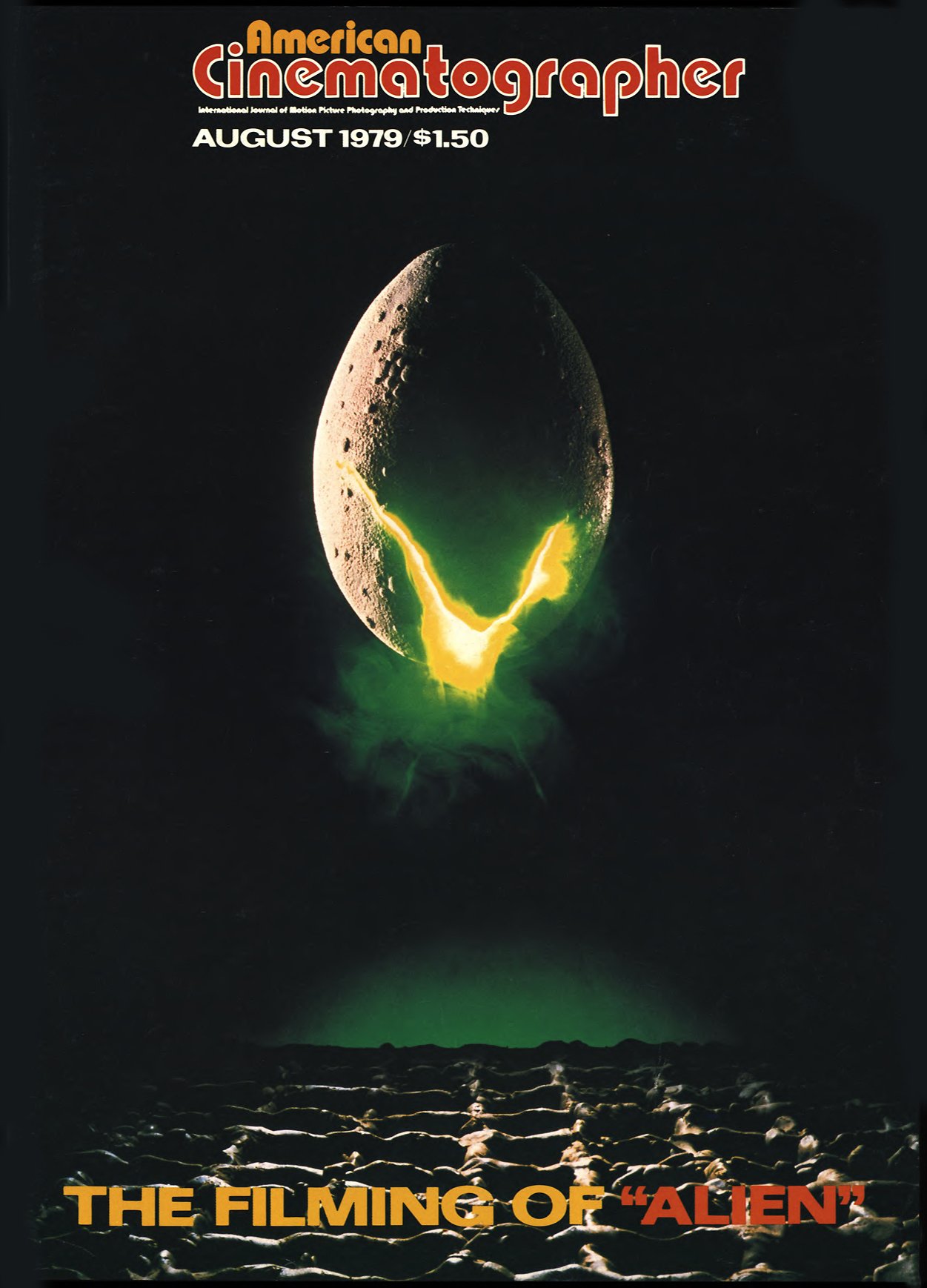
In filming Alien, director Scott worked closely with a team of artists and craftsmen to evolve a totally original concept of space. The Nostromo is a gigantic space vehicle, towing a series of three vast oil refineries, rather like a huge intergalactic truck, with three levels or decks. The A level houses the astronauts’ living area, mess room, computer annex, infirmary, linking corridors and most importantly, the spectacular operational bridge where, amidst a veritable technological wonderland, the seven crew members sit at their individual leather seats navigating the space-tug. Production designer Michael Seymour points out that the operational bridge on the Nostromo is probably the most technologically detailed and authentic scientific movie set ever constructed.
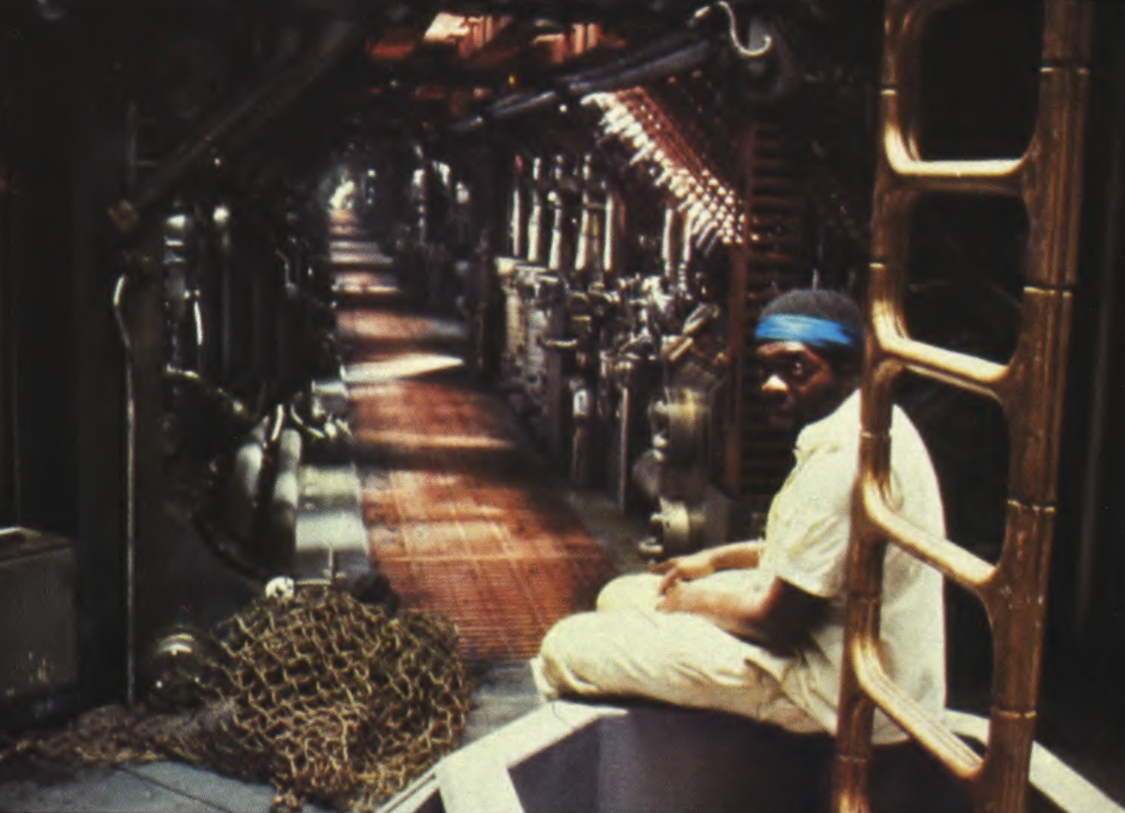
The astronauts are surrounded by forty various-sized television screens showing computer readouts, technological and navigational information, maps and views of the space area outside. From a production viewpoint, this information was fed to the screens via a special intricate video center, with numerous banks of circuits and electronic equipment, ingeniously made up from old aircraft, automobiles, radios and television sets.
“We must have spent thousands of pounds on scrap from old jet aircraft engines particularly,” said Les Dilley, co-art director with Roger Christian. “And it’s paid off handsomely because it all looks so authentic.” Dilley and Christian, incidentally, both won Oscars for their work on Star Wars — Dilley as co-art director and Christian as set decorator. Alien costume designer John Mollo also won an Oscar for his contribution to Star Wars.

Walking down a corridor from the bridge, one comes to the mess room where the crew eat and relax. There is a small kitchen area, with various foods in powder form neatly capsuled and easily identified by tiny models of food, e.g. a miniature banana, orange or apple. Unbreakable crockery is neatly arranged on shelves and there is a sink, too, since even astronauts have to wash up.
A stroll down another padded and illuminated corridor brings one to the infirmary, equipped with drugs, an operating table which glides out of sight into the wall, and a full set of surgical instruments suspended overhead.
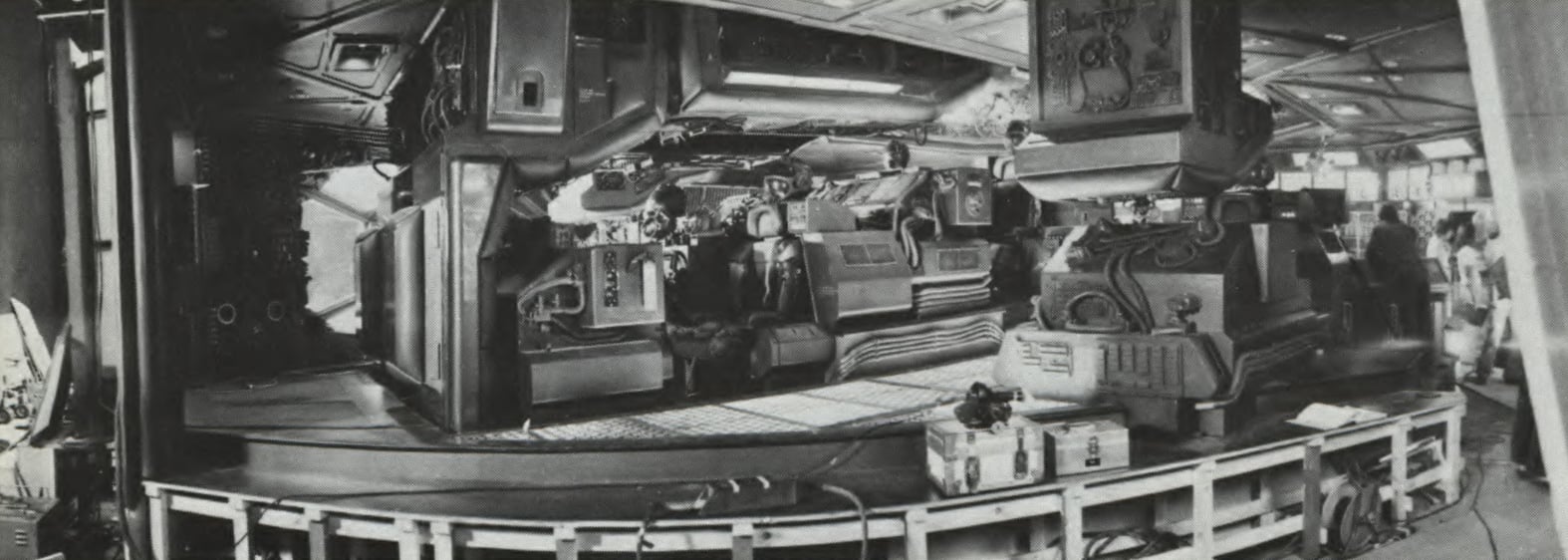
In another section of A level is the remarkable “hyper-sleep” area where the crew can sleep for extended periods of time in flower-petal-like, perspex-enclosed beds. An intersecting lobby houses two large, perspex-fronted wardrobe cases, containing spare space suits for the crew, complete with helmets and other accoutrements. The Nostromo’s movements are guided by a remarkable computer which the astronauts call “Mother” because its official technological identification is MU/TH/UR 6000.
Later sequences for Alien were filmed on the two lower levels of the Nostromo, built separately on other stages: B level, the general maintenance area, and C level, containing the vast engine rooms plus a seemingly endless network of complex machinery-filled corridors and the giant “claw room,” into which the huge landing claws of the starship retract when not in use.

The basic plan of these complicated starship interior sets allows one to actually walk from corridor to corridor, from bridge to mess, from mess to infirmary and so on, thus giving the actors and the audience the feeling of being inside a vast spacecraft, both huge and claustrophobic at the same time. Says production designer Michael Seymour, “We wanted people to have the impression that it’s a real place, that it’s more science fact than science fiction, and also that the whole place is well used, lived in and slightly battered after years of service.”
Working with director Scott, special effects director Brian Johnson and supervisor Nick Allder were in charge of the highly complex and technical work that goes into the breathtaking sequences of starships hurtling through outer space amidst galaxies of stars and planets.

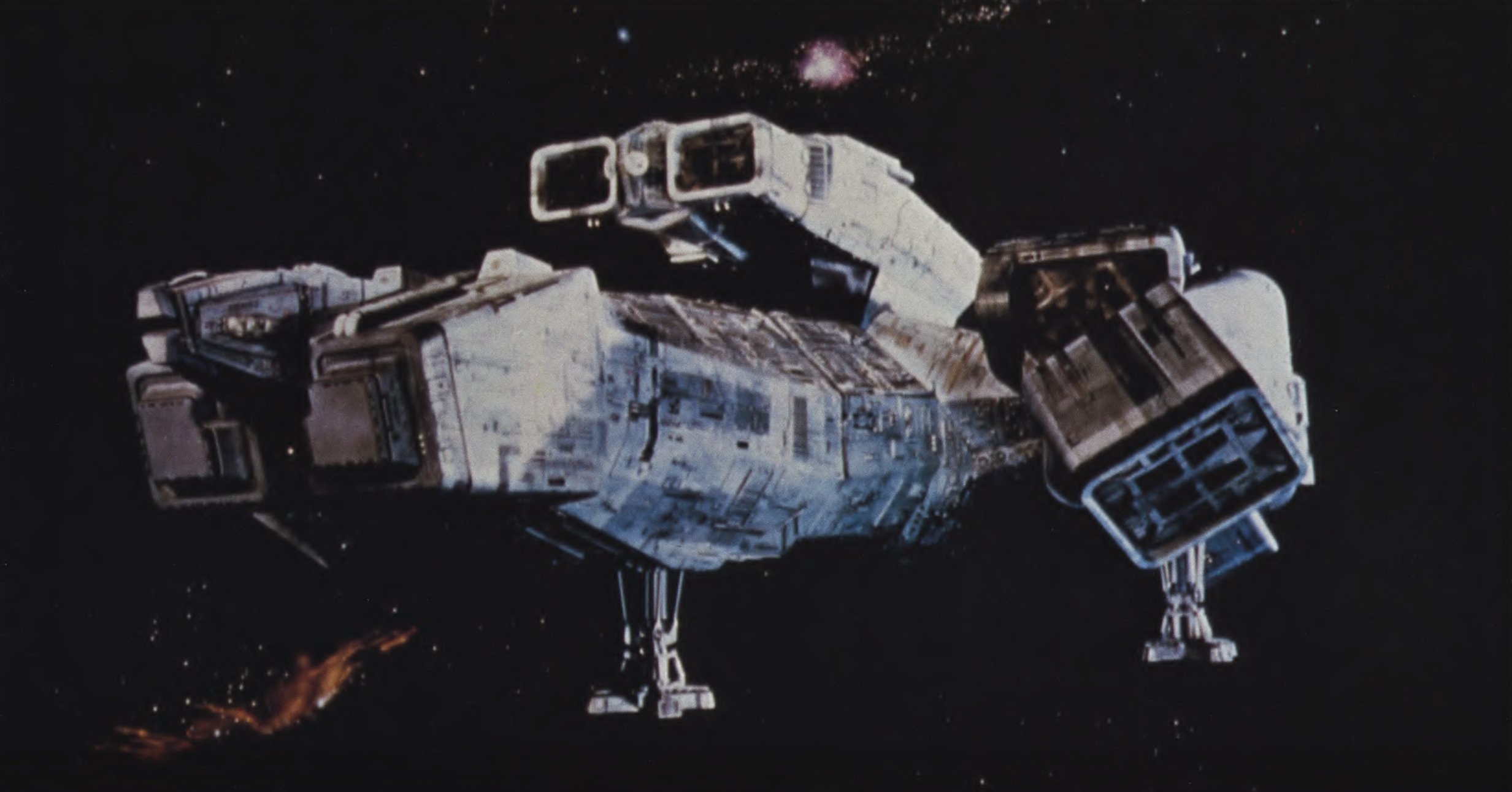
The main model of the Nostromo measured 8' in length, which represents 800' feet in the story. In the film, the refinery that is being towed is 1.5 miles across. “With our special techniques,” says Allder, “we’re able to camera-track right through space, stars, planets and so on, up to a closeup shot of the craft and actually show the astronauts moving about inside — and all in one continuous shot.
“We also use the system of ‘rotoscoping’ quite a lot, which involves taking a sequence frame by frame, making lined drawings, then hand-printed mattes, then shooting that in high-contrast, to actually create our matte and eventual effect. If all that sounds complicated, then it is. Except to the SFX technicians who know exactly what they’re doing.”
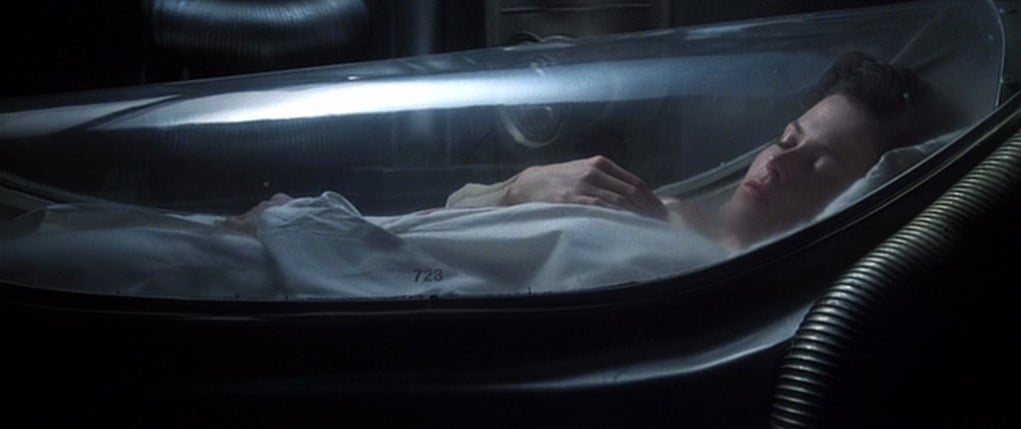
You will find AC's archival article on Derek Vanlint, CSC's cinematography here, and a piece by director Ridley Scott here.

If you enjoy archival and retrospective articles on classic and influential films, you'll find more AC historical coverage here.






